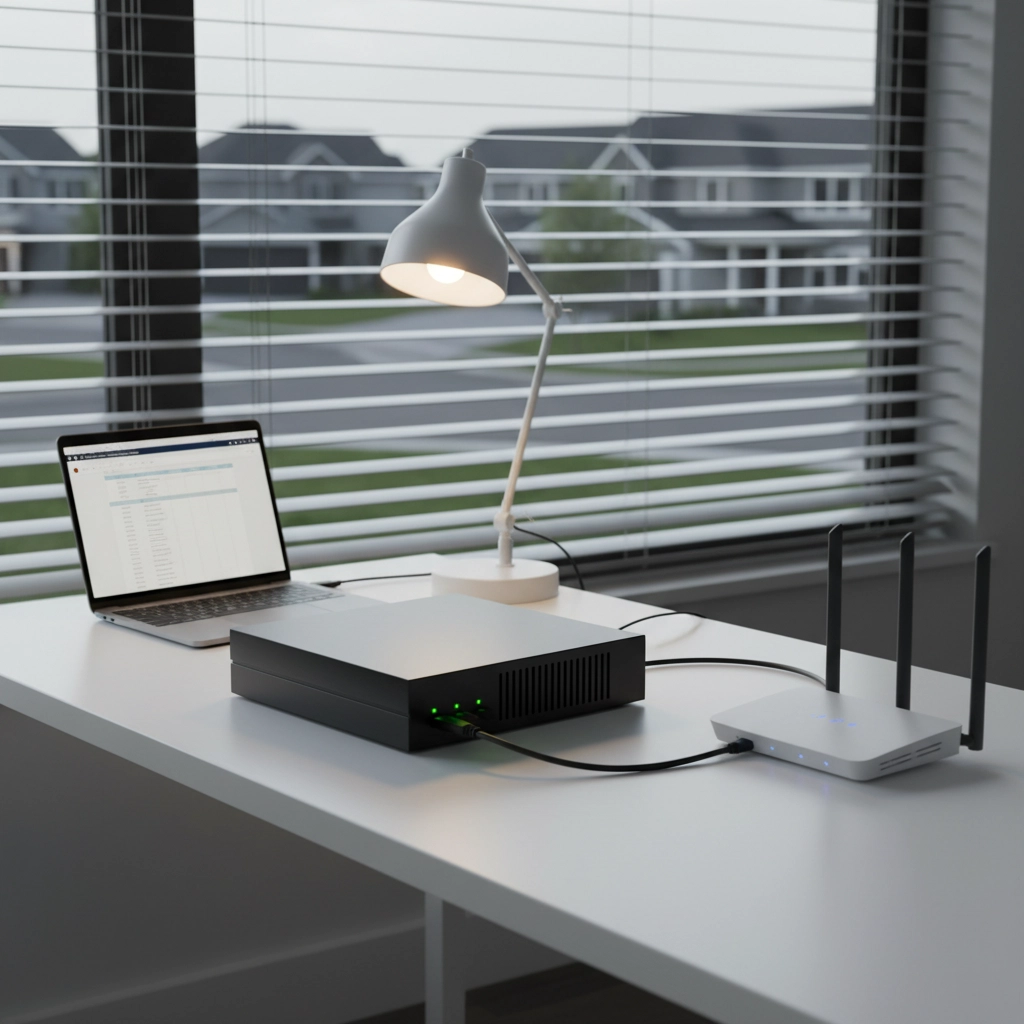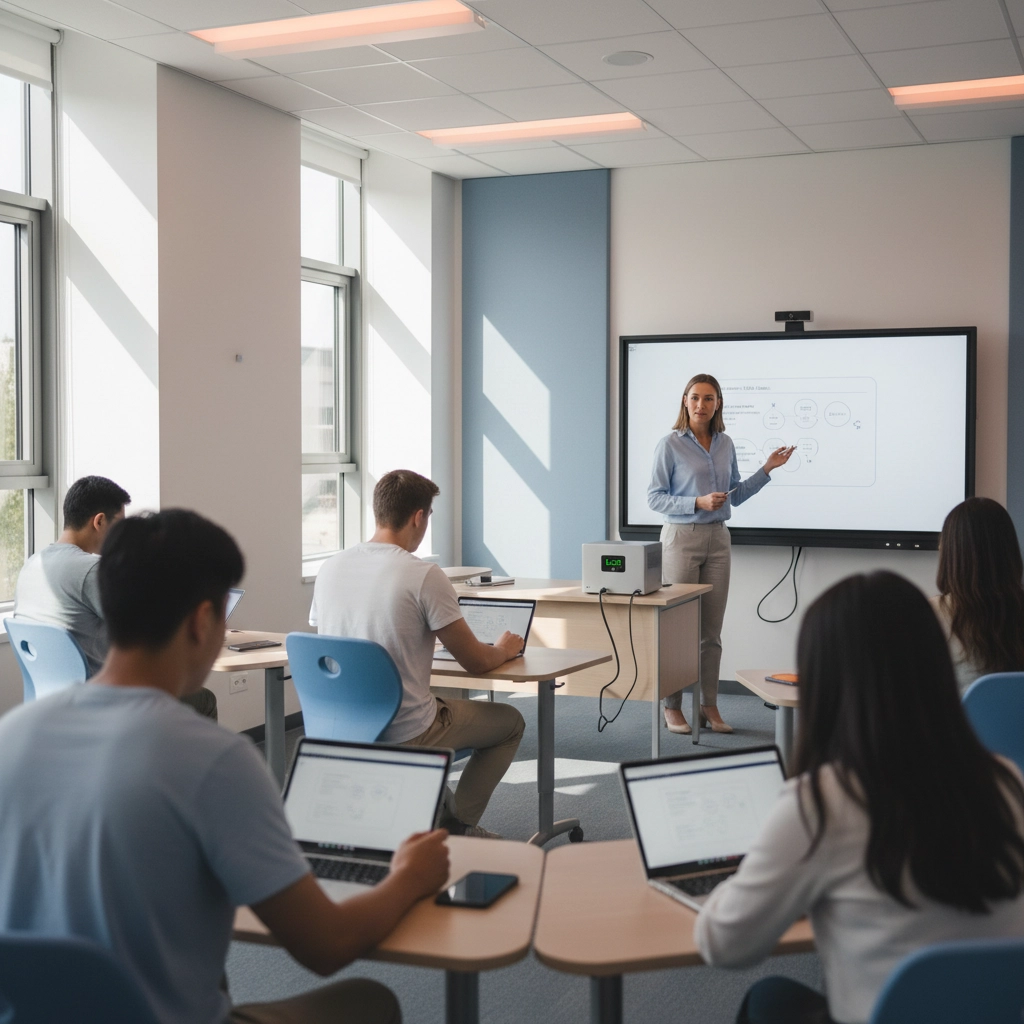
The Role of Power Protection in Remote Learning
Share
Remote learning has transformed education forever. What started as an emergency response has become a permanent fixture in classrooms, homes, and hybrid learning environments across the country. But here's something most people don't think about until it's too late: what happens when the power goes out in the middle of that important chemistry lab or during finals week?
The answer isn't pretty. Students get disconnected, teachers lose their lesson momentum, and everyone scrambles to figure out what they missed. That's where power protection comes in – and trust me, it's way more important than most people realize.
Why Power Outages Hit Remote Learning So Hard
Think about it: traditional classrooms could keep going with just a flashlight and some chalk. Today's learning environment? Not so much. Everything runs on electricity – laptops, tablets, routers, modems, smart boards, document cameras, and even the basic lighting that makes video calls possible.
When the power cuts out, it's not just an inconvenience. Students lose access to their virtual classrooms instantly. Teachers can't deliver their lessons. Group projects get derailed. And if you're taking an online exam? Well, good luck explaining that to your professor.
The ripple effects go beyond just missing class time. Students who were already struggling with digital access now face another barrier. Teachers have to repeat material and reschedule important sessions. Parents working from home while supervising remote learning get thrown off their game too.

The Hidden Costs Nobody Talks About
Power problems don't just cause interruptions – they cause damage. Those sudden power surges when electricity comes back on? They're murder on sensitive electronics. Routers, computers, tablets, and other devices can get fried in an instant.
I've seen schools replace entire computer labs after a bad storm knocked out power without proper protection. Home offices lose expensive equipment regularly. The financial hit adds up fast, especially when you factor in lost productivity and learning time.
But the real kicker is data loss. Imagine losing weeks of student work, lesson plans, or research because a power outage corrupted files. It happens more often than you'd think, and recovery isn't always possible.
How Uninterruptible Power Supply Systems Save the Day
This is where a good UPS system becomes your educational lifeline. An uninterruptible power supply doesn't just keep devices running when the power goes out – it provides clean, stable power that protects against surges, sags, and other electrical nasties that can damage equipment.
Here's what happens with a properly sized UPS in place:
• Seamless transitions: When power goes out, the UPS kicks in instantly. Students and teachers don't even notice the switch. • Protected equipment: Voltage regulation prevents damage from power fluctuations. • Safe shutdowns: Even if backup time runs out, systems can shut down properly to prevent data corruption. • Continued connectivity: Routers and modems stay online, maintaining internet access during short outages.
The key is getting the right size system. Too small, and you won't have enough runtime. Too big, and you're wasting money on capacity you don't need.
Real-World Applications That Make a Difference
Let me paint you a picture of what proper power protection looks like in different remote learning scenarios.
Home Office Setup: A parent working from home while supervising their child's online learning. Their UPS protects the home router, family computer, and essential devices. When a storm knocks out power for 30 minutes, learning continues uninterrupted while neighbors' kids lose connectivity.

School IT Infrastructure: The district's servers, network equipment, and communication systems stay online during power outages. Students can still access cloud-based resources and teachers can maintain virtual classrooms even when the building loses power.
Hybrid Classrooms: Smart boards, document cameras, and streaming equipment stay powered during brief outages. Students participating remotely don't get kicked out of the lesson because the classroom tech went dark.
Why APC by Schneider Electric Leads the Pack
When it comes to reliable power protection for educational environments, APC by Schneider Electric consistently delivers. Their UPS systems are designed with education in mind – robust enough for institutional use but simple enough for home offices.
What sets APC apart is their focus on total cost of ownership. Their systems don't just provide backup power; they actively condition electricity to extend equipment life. The PowerChute software automatically saves work and shuts down systems safely when needed. And their network management capabilities let IT departments monitor multiple UPS units remotely.
For home users supporting remote learning, APC's Back-UPS line offers excellent protection at reasonable prices. For schools and districts, their Smart-UPS and Galaxy series provide enterprise-grade reliability with educational pricing.

Beyond Basic Backup: Advanced Power Protection Strategies
Smart educators are thinking beyond just keeping devices running. They're implementing comprehensive power protection strategies that address multiple scenarios:
Cooling Systems: Server rooms and equipment closets need climate control even during outages. Extended runtime UPS systems keep cooling running to prevent overheating.
Communication Systems: Emergency notification systems, phone systems, and security cameras stay operational when they're protected by UPS systems.
Internet Infrastructure: Protecting not just end-user devices but also the switches, routers, and wireless access points that keep everyone connected.
Extended Runtime: For areas prone to long outages, pairing UPS systems with generators or extended battery packs provides hours of protection instead of just minutes.
Planning Your Power Protection Strategy
Getting power protection right requires thinking through your specific needs. Start by identifying critical equipment – what absolutely must stay running during an outage?
Calculate your power requirements by adding up the wattage of essential devices. Remember to account for startup power requirements, which can be higher than running power. Plan for at least 15-30 minutes of runtime for basic needs, longer if you're in an area with frequent extended outages.
Don't forget about installation and maintenance. UPS batteries need replacement every few years, and systems require periodic testing to ensure they'll work when needed.

The Bottom Line on Educational Continuity
Remote learning isn't going anywhere. Whether it's full-time online education, hybrid classrooms, or just the digital tools that modern education depends on, power protection has become essential infrastructure.
The question isn't whether you can afford to invest in proper power protection – it's whether you can afford not to. The cost of a good UPS system is a fraction of what you'd spend replacing damaged equipment, and it's nothing compared to the value of uninterrupted learning.
Students deserve consistent access to their education. Teachers need reliable tools to do their jobs effectively. And parents juggling work and supervising remote learning need systems that just work, even when the power doesn't.
Ready to Protect Your Learning Environment?
Don't wait for the next power outage to discover how vulnerable your remote learning setup really is. At Ace Real Time Solutions, we've helped countless educational institutions and families implement reliable power protection strategies that keep learning on track.
Whether you need a simple home office solution or a comprehensive institutional system, we can help you choose the right equipment and plan for your specific needs. Contact us today to discuss your power protection requirements and keep your educational goals on track, no matter what the weather brings.
Your students' education is too important to leave to chance. Let's make sure the lights stay on – literally and figuratively – for successful learning outcomes.
